Iceland — Highlights and Insights
Iceland surprised me in many ways.
- I was expecting the volcanic landscape, but it was different from any of my many previous “lava experiences”.
- I knew the language would be difficult, but I was amazed at how difficult it was to even pronounce place-names correctly.
- It became apparent to me soon after our arrival, that Iceland is an entire country of small towns, and all that that implies.
- We’d been told that Iceland would be expensive, especially the food. Yup.
- Perhaps most importantly, I discovered a peacefulness and vastness in this relatively small nation, that was both unexpected, and deeply satisfying.
Karin and I spent three weeks exploring a lot of the country (both self-drive and guided tours), took thousands of photos, and left plenty of US dollars sprinkled througout Iceland’s pricey tourist economy. It was a really nice experience, and well worth every cent.
I’ve decided that I won’t do a bunch of detail posts on all the areas we visited (just not enough time — I’m already getting prepared for our next trip). So instead, I’ll just write up some of the highlights, things that we learned, stuff that stuck in our minds and/or made for some good photos.
REYKJAVIK
The capital city of Iceland houses about one third of the entire population of the country. Which is to say, 120,000 out of 350,000 total population. So Reykjavik is indeed a fair-sized town, but simply can’t be compared to the “big cities” with which we’re all familiar. Let me offer some perspective: the entire population of the country of Iceland is a bit less than Cleveland, Ohio, or Bakersfield, California.
Typically, Karin and I are just not “into” big cities (or even small ones); we tend to gravitate toward open space, wild lands, and natural scenics. Reykjavik was no different for us. We did not spend time in museums or cultural centers — we did a brief food tour (fun), got our jet-lag abated, and left town to travel the country.
That said, we did partake of a unique, and popular, one-man play at the Harpa (quite a sight in its own right). I consider this a must-see: “How to Become an Icelander in 60 Minutes”. We were entertained and educated by a this local flavor of stand-up comedy, Icelander-style. Highly recommended.
(And yes, the Harpa really is that crooked.)
Another Reykjavik takeaway was one item from the (otherwise unremarkable) food tour: the hot dogs at Bæjarins Beztu Pylsur, just southwest of the Harpa near the intersection of Steinbryggja and Tryggvagata. These little delights are quite unique in taste and composition, being made of 85% lamb meat. But the crunchy onions and specialty sauces also make for an unforgettable feast. What’s more, it’s the cheapest food to be found in a country infamous for its expensive meals. Although you’ll find other hot dog stands in other towns, I don’t believe they are made or taste the same.
It takes only a few minutes, from town center, to leave Reykjavik and be driving through rural Iceland. In fact, ALL of Iceland is pretty much rural, and it is basically an entire country of small towns. The next-biggest town from Reykjavik is way up in the north, Akureyri, at a whopping 20,000 souls.
OUR ROUTE
We had worked for several weeks, on and off, with Kristin from the Nordika travel agency (their staff is all Icelanders). We had more than the usual amount of time to spend, and we wanted to see a lot of the country — especially the “highlands”, the vast, unpopulated interior. (Just exactly what “unpopulated” means, in a country with an average of less than nine people in each square mile of space, was going to be interesting.)
With the complexities of hotel arrangements, and significant road restrictions, we ended up with a curious sort of “zig-zag” beginning, followed by a more conventional hop-scotching around the country via the “Ring Road”, with multiple side trips. Here is an approximate map of the major route we followed; most of our side trips aren’t shown.
Highlands — The most challenging part of our planning (aside from a three-week string of hotel bookings) was choosing which part of the highlands to visit. The interior is vast and empty and traveled entirely on rough dirt/lava roads. In some areas, melting glaciers pour prodigious amounts of icy water across the roads. The bottom is invisible and treacherous, and depths are often sufficient to float a vehicle downstream.
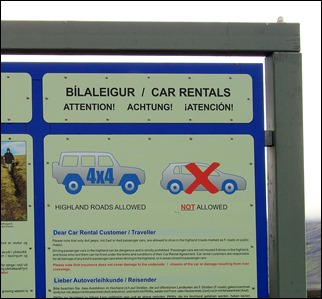 Furthermore, the car rental companies are very, very explicit: If you damage or lose a vehicle in a river crossing, it’s your nickel; no insurance coverage whatsoever, and none obtainable.
Furthermore, the car rental companies are very, very explicit: If you damage or lose a vehicle in a river crossing, it’s your nickel; no insurance coverage whatsoever, and none obtainable.
As we did our research, we learned that the majority of rivers were flowing on the eastern side of the highlands, that the western side was easier and safer, and in particular the F35 road was a decent choice. Even so, it was estimated that we would need 7-8 hours to drive the 300km/200mi across the plateau.
For all these reasons, we rented a mild 4×4 (Toyota RAV4), forsaking a larger, more expensive Land Cruiser which would not have afforded us any more real capability (or courage).
Later on, during our tour by “super-Jeep” to the Askja volcano crater, we did indeed experience deep, rocky river crossings, with rushing waters that would have floated our little RAV4 away as easily as a pool toy.
Roads — In general, roads in Iceland are paved — with many exceptions. The dirt sections are often well-graded, smooth, and fast — with many exceptions. The speed limits are well-posted, 90kph national maximum, and fairly well observed — with many exceptions. Driving isn’t particularly adventurous, but it’s different enough to be ever-interesting. We found it strangely difficult to set off toward a destination we were incapable of pronouncing.
Most remarkably, almost all roads are two lane, with many areas where it’s really 1.5 lanes or maybe 1.2 lanes. Only in Reykjavik did we ever see “highway-like” roads with multiple lanes, and then only for a few miles at most. Local drivers are very accustomed to one-lane protocols, and passing oncoming vehicles is attention-getting but not scary.
Tourists, on the other hand, generally have no clue, and passing is more benign. The visiting drivers know they don’t have a clue, and rather than blunder into an accident, they are almost universally over-cautious.
One-lane bridges are everywhere, even along the main “circle road” Highway 1. The protocol is quite simple: If you are first, go. If you’re second, wait. Ah, but it’s the determination of 1st/2nd that makes it all so much fun. Some of the approaches are simply invisible from either end, so you just have to gingerly get up to the end of the bridge to see if anyone is already on it. If so, they won. If not, you won. A very few of the one-lane bridges are so long that they have little dinky pullouts for mid-span passing. More fun.
YIELD signs are the order of the day. There are maybe 20 actual STOP signs in the entire country (kidding). Everywhere else, it’s a Yield sign, even when a major road intersects another — like this junction from a secondary highway onto the Ring Road, Highway 1. And traffic lights? Forget it, except for major towns. Iceland, traffic-wise, is a nation of prudence and courtesy. Mostly.
WIFI is simply amazing. The country has really gone the extra distance, and the car rental company provided us with an unlimited-data hotspot as part of the rental (wow!). Hotels and restaurants routinely provide free, open-security wifi with very decent performance. Overall, there were very few times during our entire visit when we were without a connection. This made it superbly easy to navigate, do research on points of interest, get reviews on different areas, etc. etc. And of course, check our emails. In fact, it was also really nice to post a few photos on FB as we went along.
SIGNAGE is also very impressive. Information, maps, background and history, legends and myths, are all to be found in profusion along the way, even in the back country. VERY tourist-oriented, and much appreciated.
FARMS and VOLCANICS
If I were to try to characterize Iceland in as few words as possible, I’d say it was a circle of small farms surrounding an array of lava plateaus. And that’s probably pretty accurate, but in fact the farms themselves are built on lava flows, for of course all of Iceland has been produced, and fairly recently in geologic terms, from volcanic flows.
The main body of land was created by successive eruptions and flows of lava, forced up from a thin spot in the Atlantic Ridge — the place where the North American and European tectonic plates meet and grind against each other. The seas of course eroded and shaped the lava over time, sometimes with surprising results.
With Iceland sitting literally on the joint between the two plates, the surface of the land sometimes mirrors this gigantic fracture. One such spot was near Myvatn, beneath which the main Atlantic Ridge runs its merry way. There, I got a chance to put one foot in North America and one in Europe, so to speak.
Historically and today, the ocean helps to moderate temperatures and distribute soil nutrition; first inhabitants found the shore-lands capable of some limited farming, and the bountiful sea was teeming with fish.
Farms in Iceland today seem largely dedicated to raising sheep, and growing the hay to feed them through the long winters. We saw very little evidence of any other crops than hay.
Hay is almost universally baled into giant rolls, encased in plastic wrap to preserve moisture and survive handling and storage. The wraps are creative, and we saw white (common), green and black (less common), and pink and yellow (only occasionally). Grades of hay are marked on the wrapper; there doesn’t appear to be any “color coding”, it’s just what’s available in the market each year. All the farms have pretty decent equipment to harvest the hay.
When packed in white, they look like nothing so much as giant rolls of toilet paper, or marshmallows.
It takes one of these giant bales of hay (about 1000 pounds) to make a single meal for 500 sheep. For a long winter, and a safety margin, a farm with a herd this size would need 200 days’ worth of feed, or 400 bales. Farm yield can be 3-4 bales per acre, so it can take quite a bit of land to support a sizeable sheep herd, despite the free-range feeding during the ‘easy’ months.
Iceland sheep are small and hardy, and there are not many predators to give them any grief. In fact, the sheep are allowed to free-range for much of the year, and are only brought back to the farms for the hard winter. Sheep produce excellent wool and tasty lamb meat.
And there are 800,000 sheep in Iceland; a lot of mouths to feed. For this enterprise, there are many, many small farms, with a wide assortment of landscapes, and farmhouses. Farmhouses can range from unremarkable to picturesque, to traditional, including sod roofs.
Did I mention that the sheep are free-ranging? With the accent on ‘free’, they are everywhere, all summer long, including the roadsides and, if there’s some tasty minerals to be found, on the roads themselves.
The most important thing to know about sheep is to try not to drive between a ewe and her (usually two) lambs. When threatened, the lambs will sprint for Mom’s side.
We saw sheep, in all shades from snow-white to coal-black, everywhere from the ocean to the most distant highlands. In some places, the lava was so barren and rugged — what they could find to eat was not obvious to us.
They seemed pretty car-savvy, and we never saw any roadkill in three weeks’ travel. But we heard that there is some mortality, and we drove cautiously whenever they were near.
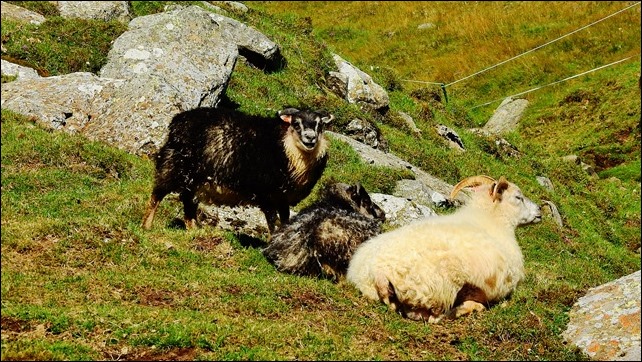
COASTAL FJORDS
The coastal fjords of Iceland may be unique in the world — I’m not enough of a geologist to say for sure. But the fact is that they were formed by a very unique process, perhaps unique to Iceland alone.
The vast lava plateaus, erupted in multiple layers over millions of years, formed rugged, jagged cliffs at the sea, many of which can still be observed today, and account for some of Iceland’s striking beauty. But then the Ice Ages happened, and with them came extensive glaciation and glacial flows.
Anywhere there was a weakness, the gargantuan rivers of ice gouged away the lava, cracking it and shoveling it into the ocean at arbitrary points around the island. Then, as the glaciers receded, their outflowing rivers continued the process of washing away enormous “grooves” of lava. The characteristic U-shaped valleys are one of the results; fjords are the other.
The effects are blatantly clear when looking at a map of the country. What might have been a ragged, oval border has instead become an endless series of peninsulas, “fingers”, and palmated outlines, all courtesy of eons of ice-hammering.
This is nowhere more pronounced than in the Westfjords area. Take a look at our route (above), and see the intensive back-and-forth track of the roadway through the northwest fjords. In the car, it was an amazing segment of our journey, for we could easily see, on our maps and out the windows, the zig-zag paths we were to follow.
At the inner end of some fjords, a small farm or town might be found — most times with a marina of some sort. Fjords are natural harbors, protecting against all but the most fierce weather.
The HIGHLANDS
The interior of Iceland is remote, vast, empty, unpopulated (we LOVE places like this). Very few tourists, and not that many locals, visit the highlands. Often, we’d ask an Icelander about such-and-such a spot, or road F35, and most often would get a bit of a blank look — not familiar.
The western (Kjolur) area, where we drove our rental car through, is high, rugged, wind-blown, and quite arid compared to the coasts. F35, the only through-road, winds between two massive glaciers, the Langjokull to the west and the Hofsjokull to the east. These enormous ice plateaus loomed over the broad plain where the road cut through, and their dark menace added to the gloom of the low weather during our excursion.
The highlands are the exception for Iceland easy-wifi, and we were soon out of range of any connection. We had foreseen this, and were using our paper and offline maps to navigate. But we’d lost the ability to research any new item we might discover. Thinking back on our recent flat tire from a rock chip (in the Westfjords), we proceeded cautiously. We were not sure of how much traffic (or help) we might encounter.
We were feeling pretty adventurous by about the 1/3 point, kinda proud of ourselves, chests puffed out and all. By and by, we spotted an odd sign close by the road. Hmmm, we wondered, what could it be?
A bus stop. In the middle of nowhere, central Iceland. With a daily schedule no less. Our puffed-out chests deflated quite a bit. AND just down the road, we found…. a coffee shop. Sheesh.
Even further, our sense of adventure was again given an “adjustment” as we passed a group of bundled-up cyclists, slogging down the road with their huge panniers. After that, the most adventure we felt was just dealing with the horrible washboard road.
But the highlands did have their appeal, with huge stretches of landscape with no fences, buildings or structures of any kind save the road we traveled. In addition, side roads would occasionally crop up, and we’d “map-shop” for what might lie over the next hills to the right or the left.
One such side foray led us to a large thermal area, with hot springs, cabins and tents, and hiking paths through the multi-colored hillsides. This was the Kerlingarfjoll hot springs area, and it was extraordinary. Even the soggy sky could not dull the beauty of the steam-sculptured slopes.
We had to hike the area across some slick, rain-soaked boards that had been placed as steps. Likely the intent was to make the walking easier, both on the hikers and the terrain; but the wet boards were tricky at best, and we chose our footing on the dirt wherever possible.
Heading away from Kerlingarfjoll, a new set of glaciers guided us west and north, back up F35.
We drove past the huge string of lakes and hydroelectric goings-on in the north, and eventually found our way to Highway 1 and the way to Akureyri, Iceland’s second-largest city (or should I say ‘township’) at 20,000 people. Not much compared to Reykjavik, but truly a remarkable change from the desolate landscapes of our day in the highlands.
HIGHLIGHT: PUFFINS
Puffins have got to be one of the cutest, most adorable birds to be found on the planet. And they nest in many locations around Iceland, some of which are pretty easy to get to. The frequent traipsing around of tourists has made the birds fairly approachable; I was often able to get within 30-40 feet. We went to some cliffs in the west, and another time over in the southeast — but there are more than a dozen popular viewing locations around the entire country.
One of the most endearing, and photogenic, traits of these birds is their ability to gather up multiple fish in their beaks on a single trip out to sea. They have a ridge on the roof of their beak, and a muscular tongue, and they can be seen bringing nearly a dozen small fish in a single trip (sandeel, herring and capelin, if you’re curious).
Puffins live dozens of years, and they rear only a single chick in each season. Also, they come back to the same burrow every year. Those burrows go all the way up to the top edge of the cliffs that they favor, sometimes just under the surface.
It’s possible to get seriously tripped up when walking around the colonies. Some of the burrows are just under the surface, and it’s common to step right into them. The last thing you want to do is stumble over any of these nesting cliffs. It’s a long way down.
WATERFALLS
No discussion of Iceland is complete without mentioning waterfalls. The best estimate we could find is that more than 10,000 waterfalls are flowing in Iceland. That works out to one waterfall every two miles in any direction, anywhere in the country. OK, it’s not that uniform of course — what we experienced was a seemingly endless supply of cascades, large and small, every day of our stay.
The suffix for “waterfall” in Icelandic is “….foss”, so it was quickly obvious that any word that ended in ‘foss’ was the name of a waterfall. (We learned a few other suffixes as well, such as ‘jokull’ — glacier.)
For us, the most remarkable falls was not the biggest or highest, not by far. Barnafoss is a fall that is generated not by surface flow, but by a seepage between layers of lava. It’s quite a sight to see torrents of water flowing, literally, out of sheer rock.
HIGHLIGHT: INSIDE the VOLCANO
Imagine getting an inside view of a real-life volcano. Not just a hike on the rim or even down into a crater, but a descent right into the belly of the beast. That’s what the “Inside the Volcano” tour is all about.
Oh, not to worry, it’s dead and cold, no eruptions or gases to deal with. In fact, the temperature is close to freezing all year round, so warm duds are highly advised.
The volcano is called Thrinukagigur, and it’s very close to Reykjavik. It’s also wildly popular, available by reservation only, and requires some advance planning. And with all of that, it still involves a 4-mile roundtrip hike, no vehicles or horses thank you.
[It is possible to arrange to ride the trail on a fat-tire mountain bike. I can’t say whether that makes it any easier; we saw only three visitors try it, and didn’t have a chance to ask them about the experience.]
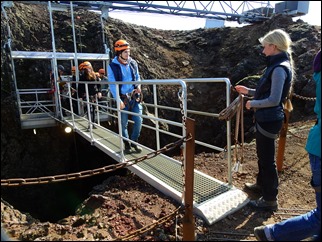 After a fairly flat hike, everybody gears up with safety equipment, listens to the prep talk, and makes the steep climb up to the gondola platform. At that point, you troop into the gondola, safety-up (attached lines), and start a five-minute descent down over 400 feet into the ancient magma chamber.
After a fairly flat hike, everybody gears up with safety equipment, listens to the prep talk, and makes the steep climb up to the gondola platform. At that point, you troop into the gondola, safety-up (attached lines), and start a five-minute descent down over 400 feet into the ancient magma chamber.
The volcano was formed, as typically happens, by a magma hot spot nearing the earth’s surface, and breaking through. The difference with Thrinukagigur from other volcanoes was remarkable. Whereas the typical volcano will stop erupting, cool, and solidify, Thrinukagigur instead experienced an abrupt withdrawal of the hot spot. With this withdrawal, the still-molten lava in the core of the mountain simply drained away before it could become solid.
The massive cavity left behind became beautifully, one could say artfully, stained with the by-products of the huge thermal processes occurring within the cooling rocks.
What awaits the adventurous tourist today is a vast array of colors, textures, and crevices in every direction. Leaving the gondola, the terrain is positively treacherous, and requires close attention when moving about. But even though time at the bottom is limited to only 20 minutes or so, it’s a terrific experience. My only complaint was my lack of experience in low-light photography, and not bringing a tripod.
Back on the surface, we enjoyed a wonderful bowl of Icelandic meat soup (lamb). We also had the pleasure of the company of a “rescue” Arctic fox who the staff was rehabilitating for subsequent release to the wild.
TERRIBLE TERNS
Before I wrap this up, I have to mention the Arctic Terns. These birds are ubiquitous throughout the country, nesting in broad open fields. They have a well-deserved reputation for aggressively defending their nests, and I have to say that “aggressive” is way too mild a term.
These little demons will start to harass you when you wander within 100 yards of their territory. It starts with harsh, screeching calls, followed by fly-bys and wing-flutters. Then, the strafing and dive-bombing begins. Eventually, Karin got pooped on, and I git my head pecked, almost drawing blood. The closer you get, and the longer you stay, the more of a beating you’re going to get.
Whenever you discuss Terns with any locals, you’ll generally get a rueful smile and shake of the head. If you do find yourself in Tern territory (almost unavoidable at some time or another), you can wave your arms over your head, but better yet, wear a hat. And plan on doing some laundry. It’s all kind of fun, and funny, and most people are pretty good-natured about it. But eventually, you find yourself thinking about how to avoid walking by any nesting colonies.
SUMMARY
Well, I’ve done a good job scratching the surface. Lots left out, and literally hundreds of pictures not shared. But this has been a decent overview, and of course great fun for me, reminiscing on the trip while I wrote this post.
Some statistics:
- 22 days
- 14 hotels
- ~3000 miles total self-driving
- ~600 miles dirt roads
- ~40 miles hiking
- Four forays to/through the highlands
- Six guided tours 3hrs-12hrs
- 11days overcast, 11days sunny
- 1 flat tire (from a rock chip)
- Low temp 3C/37F Hi temp 27C/81F
And a kicker — the “Bra Fence” near Vik. Apparently a farmer’s wife hung her bra out to dry one day. The neighbors followed suit for a joke, and the rest is history.
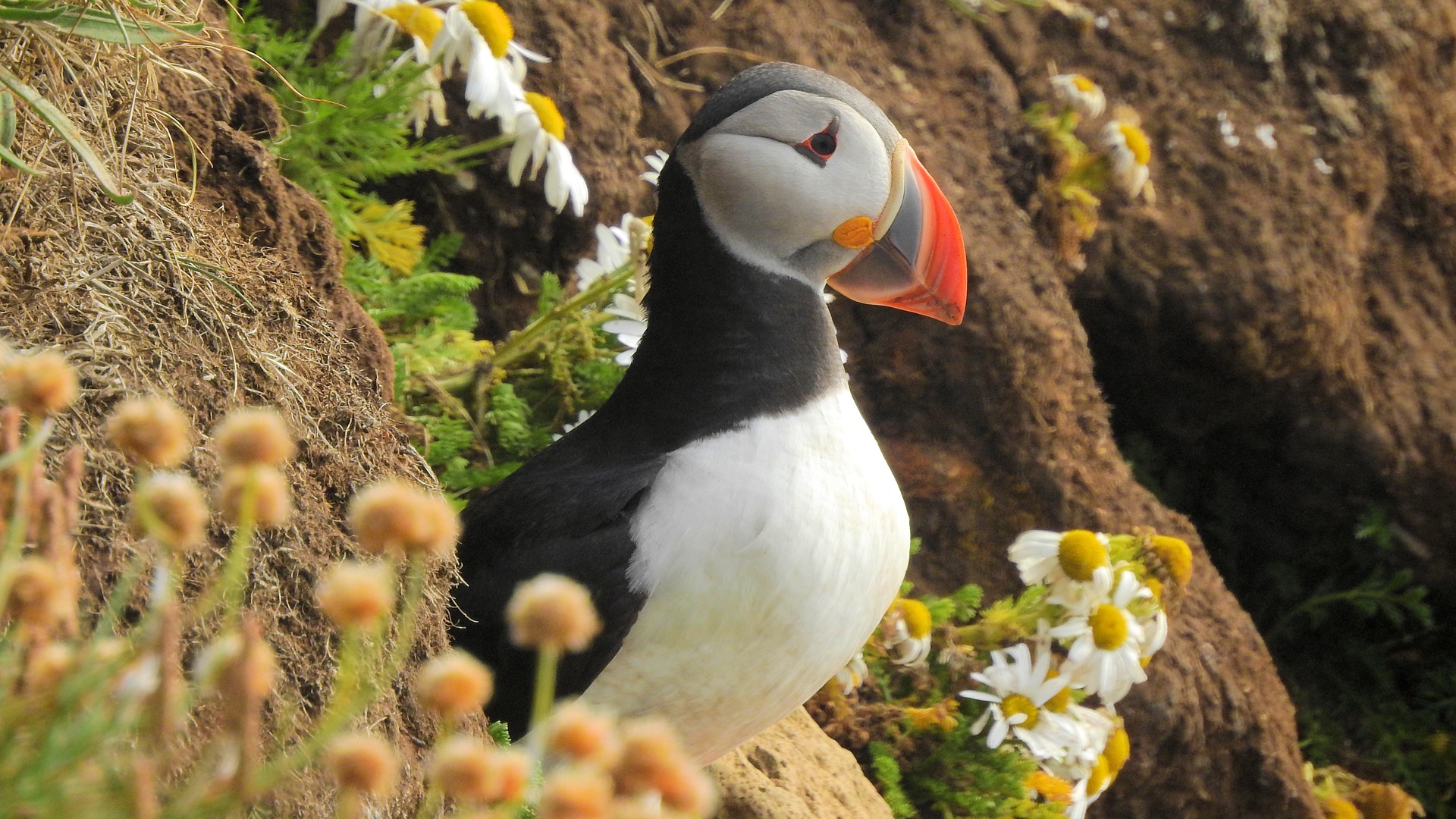
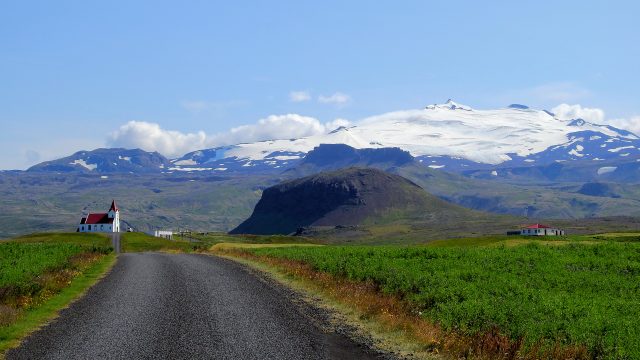
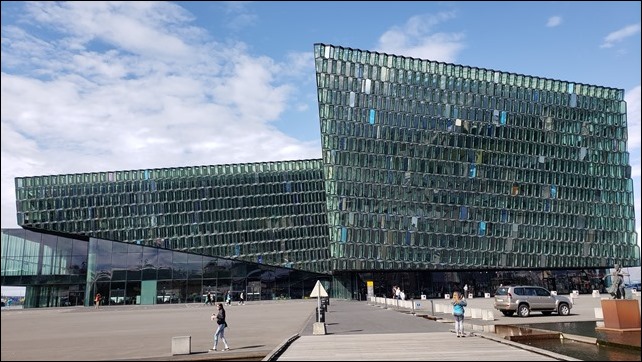
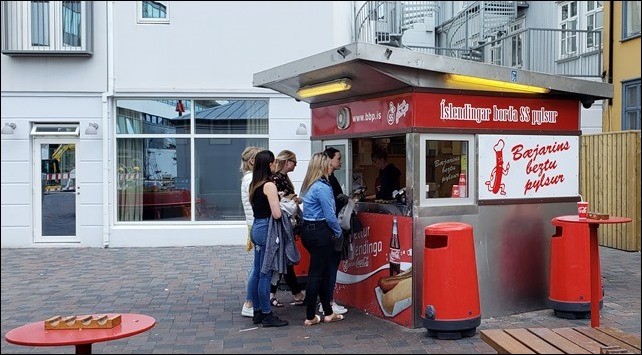
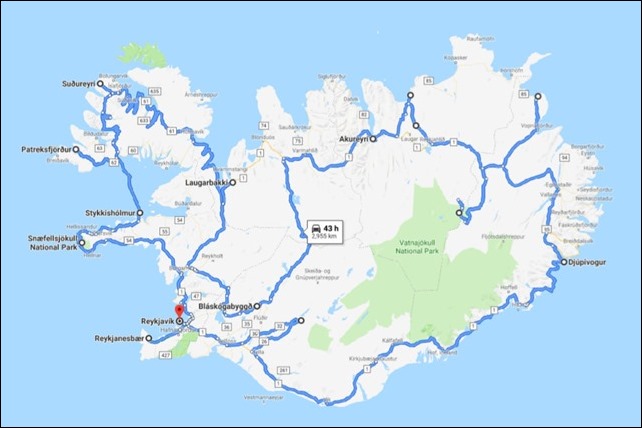
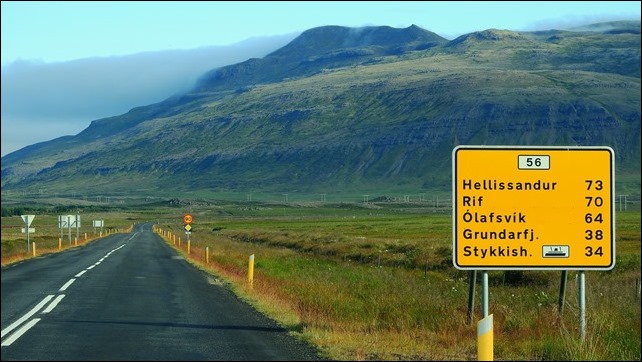
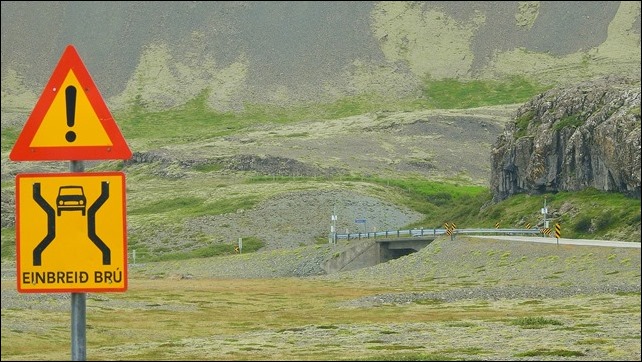
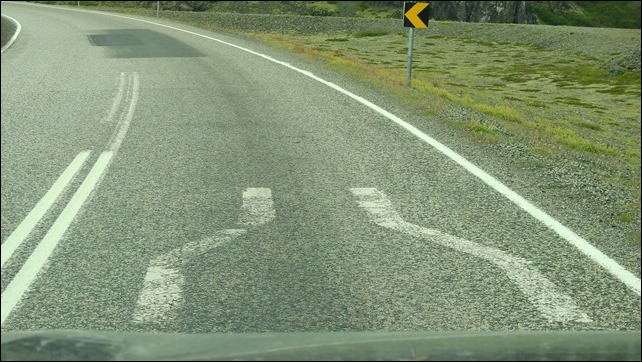
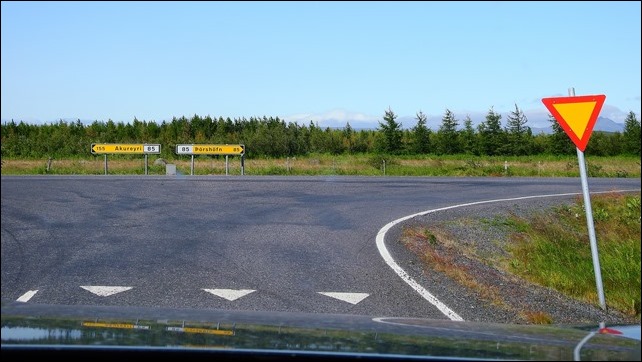
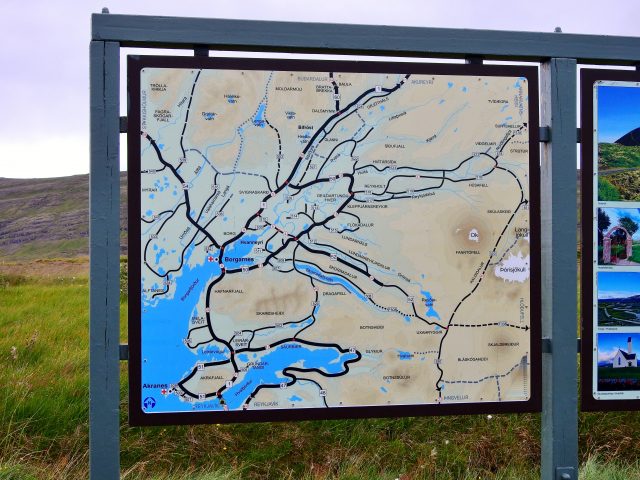
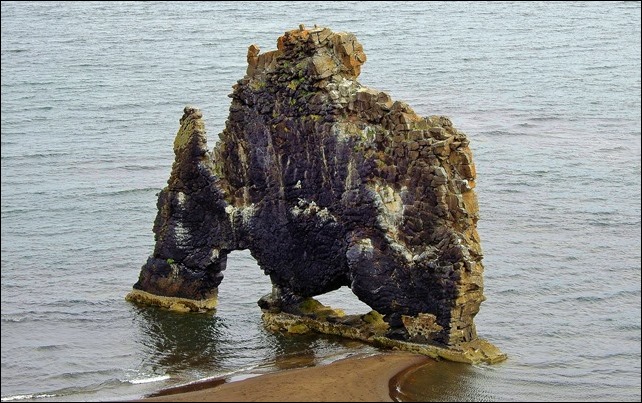
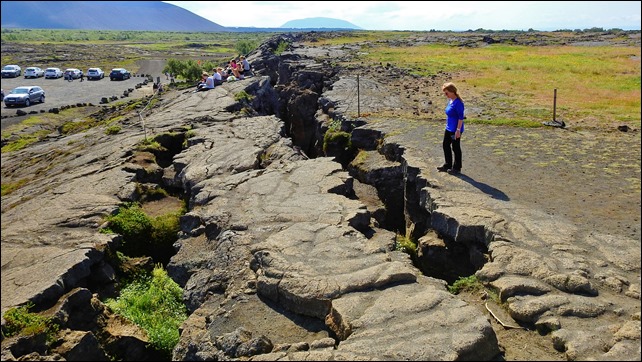
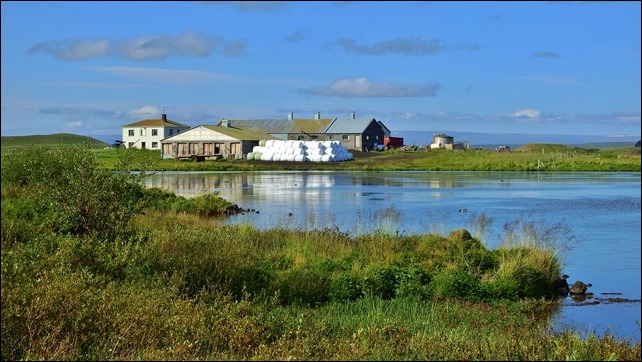
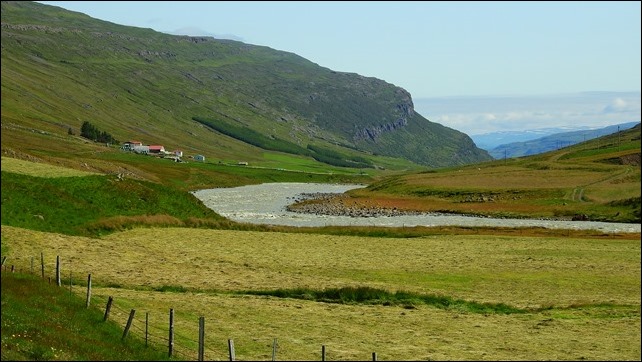
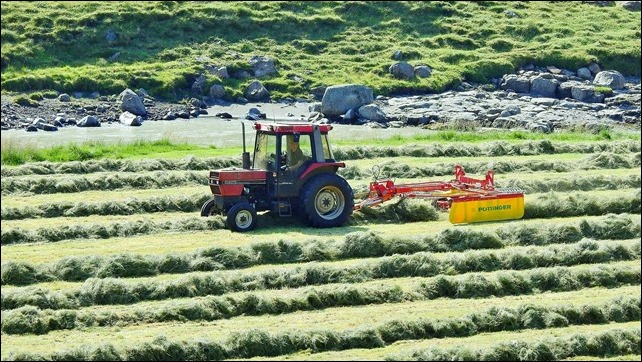
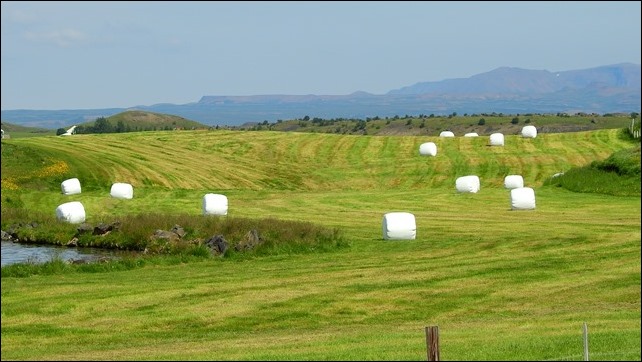
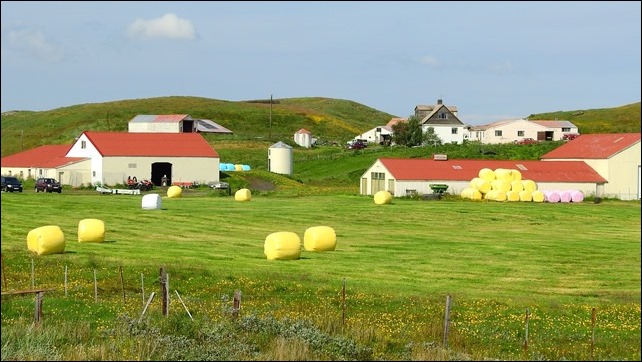
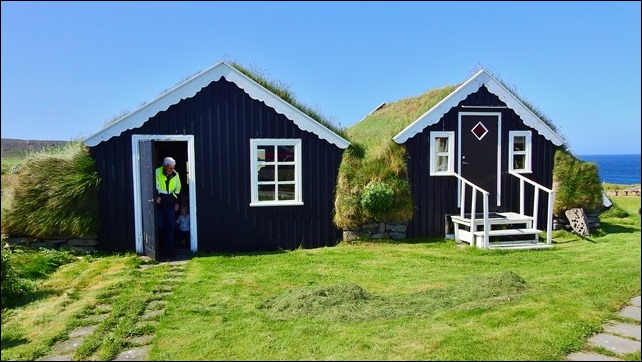
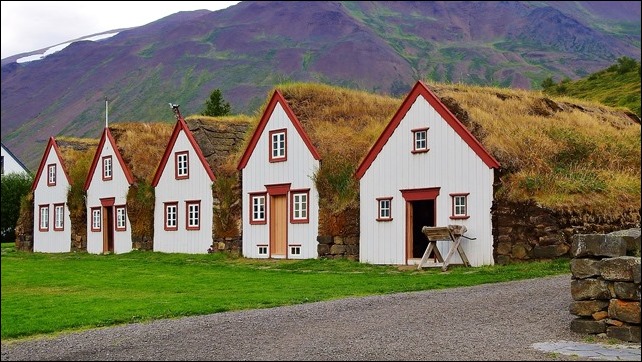
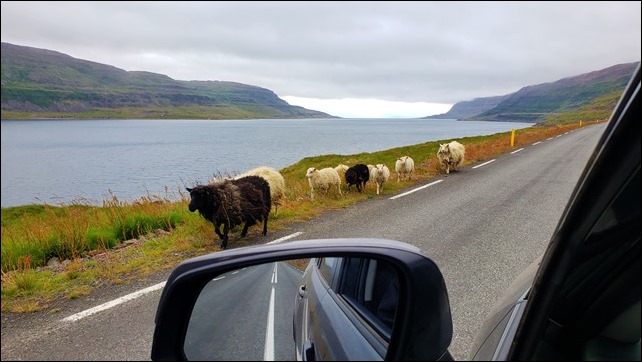
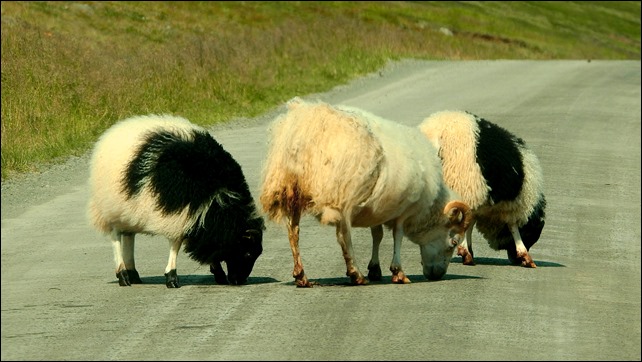
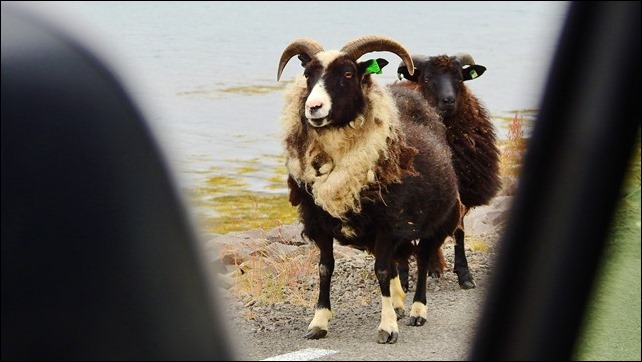
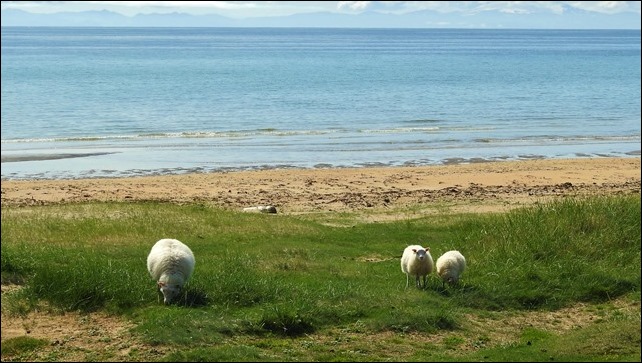
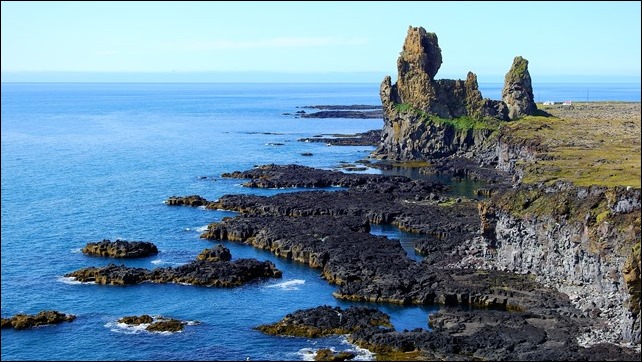
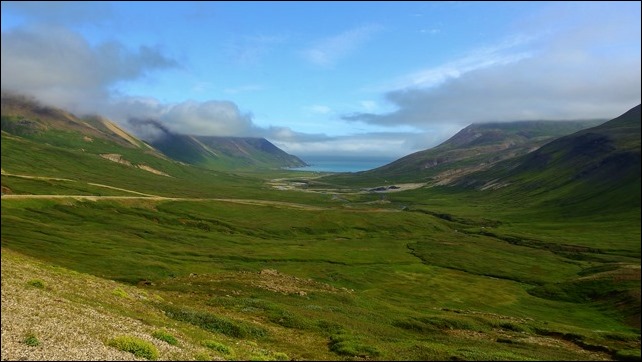
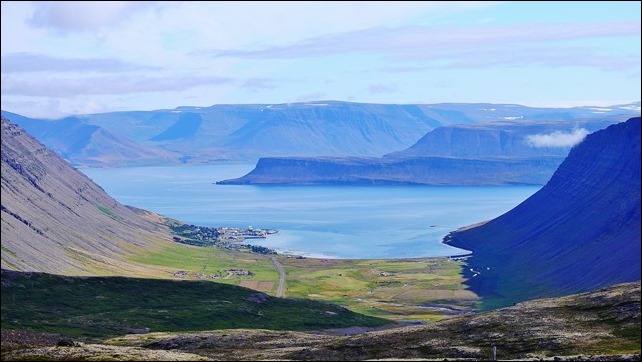
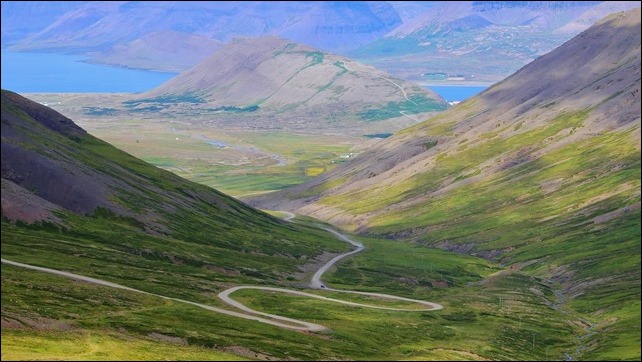
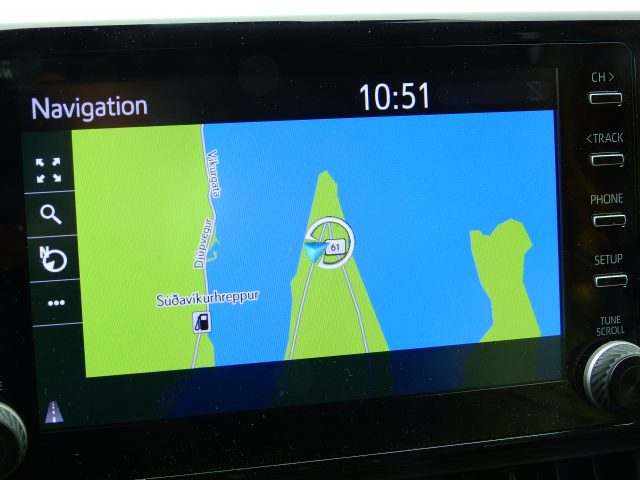
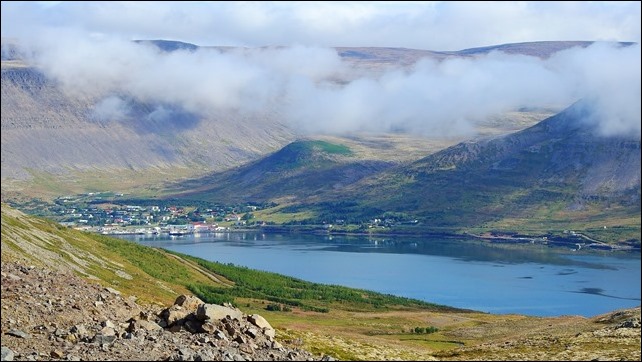
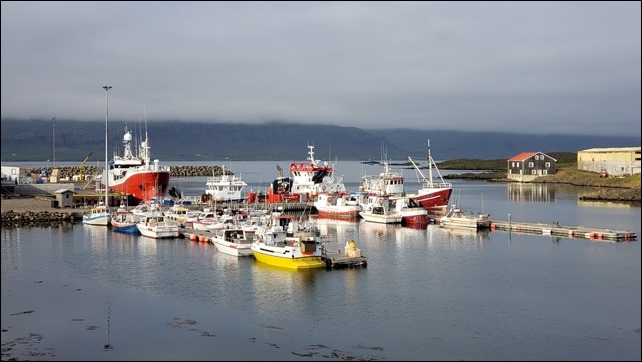
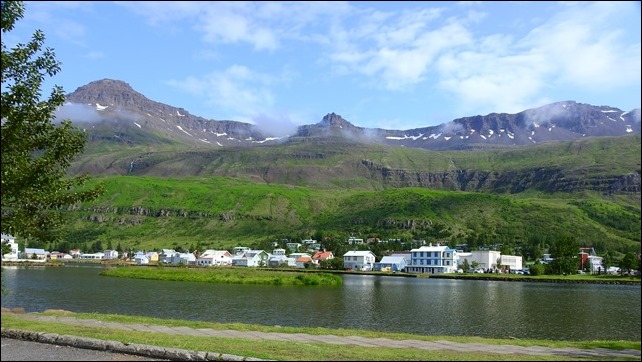
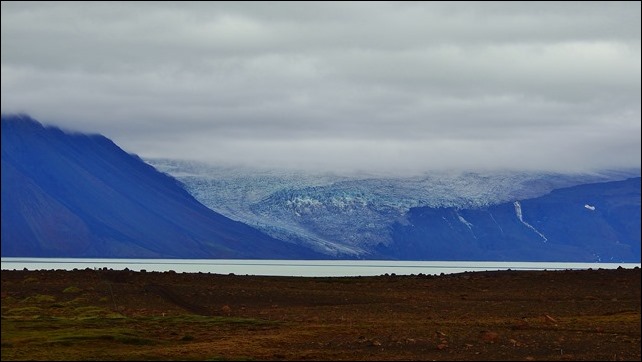
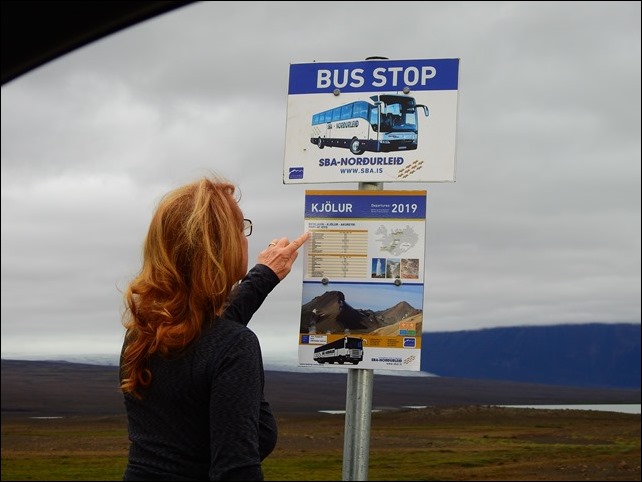
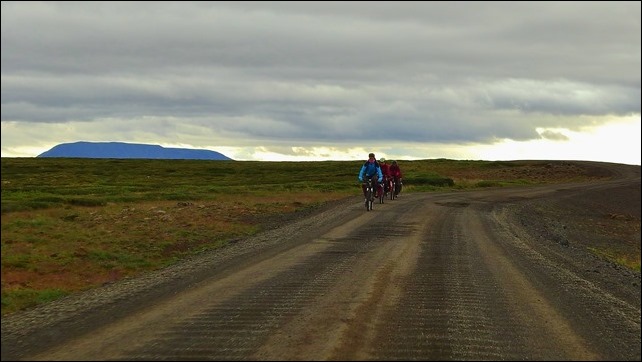
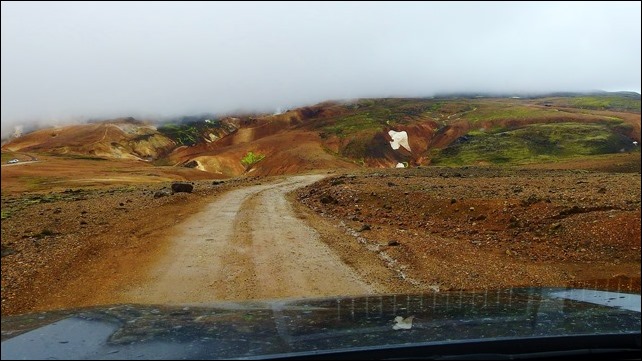
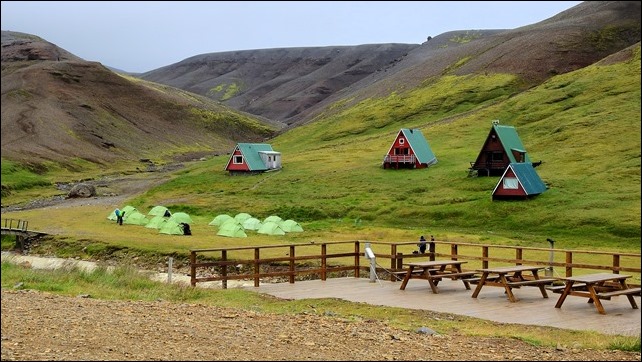
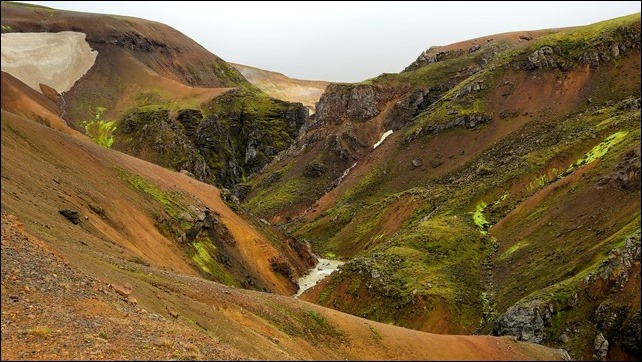
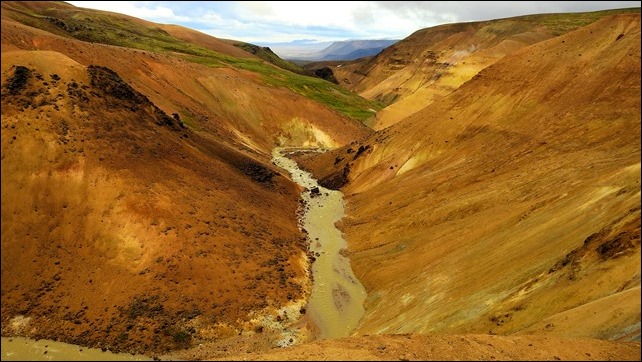
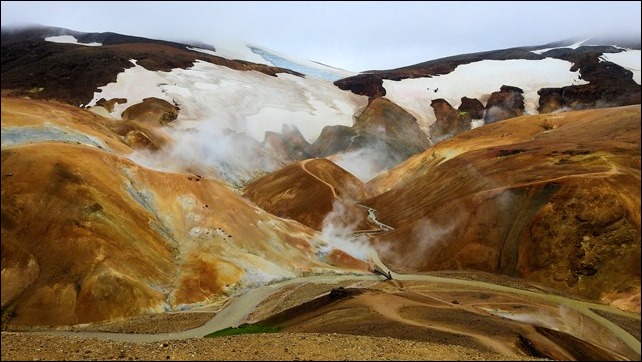
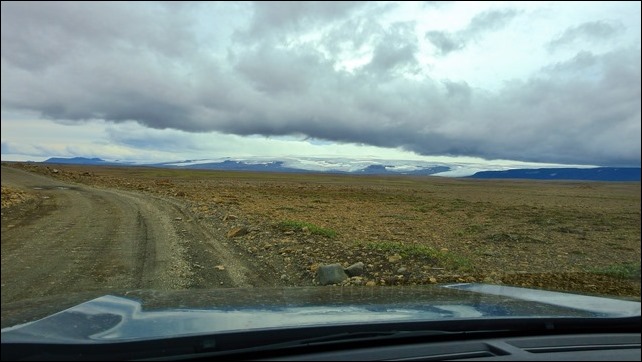
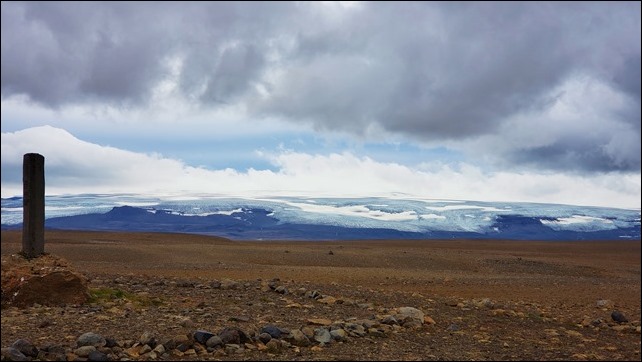
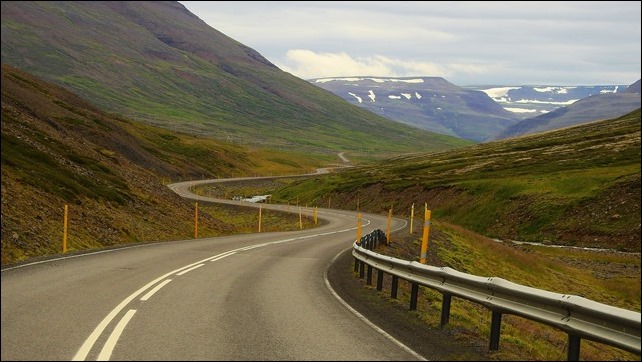
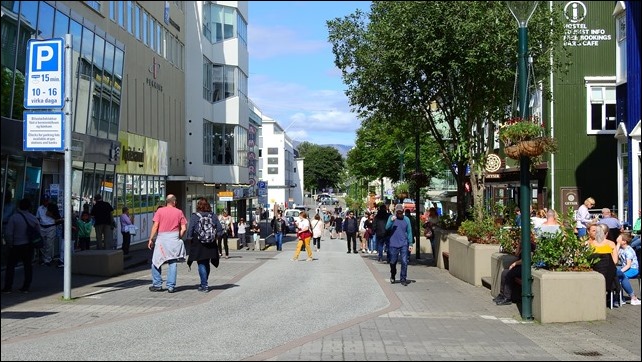
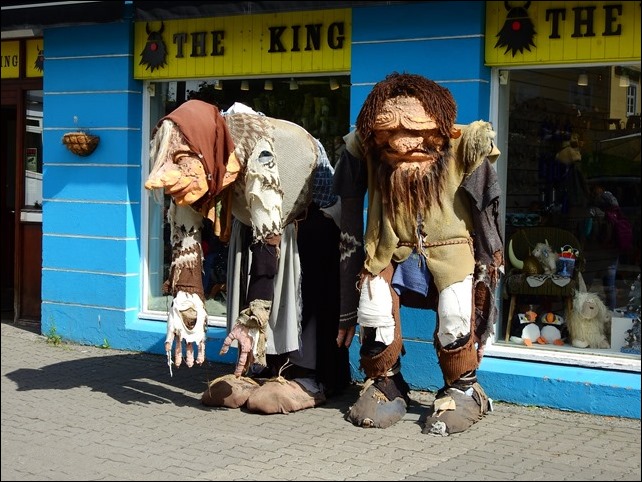
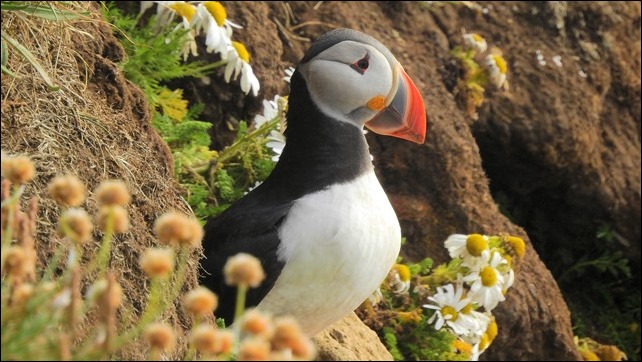
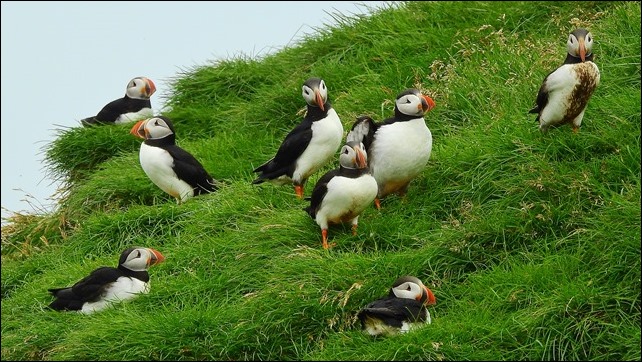
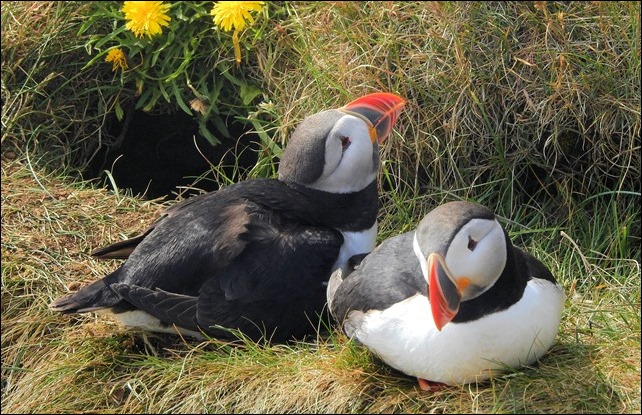
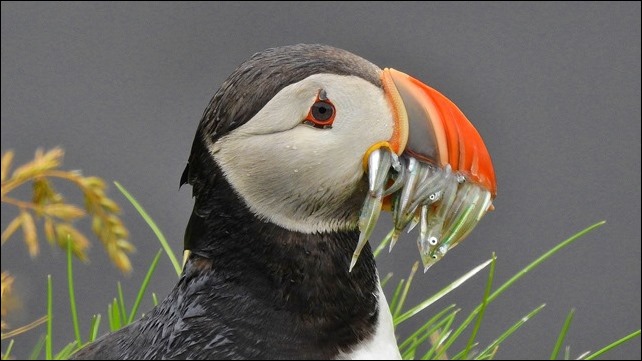
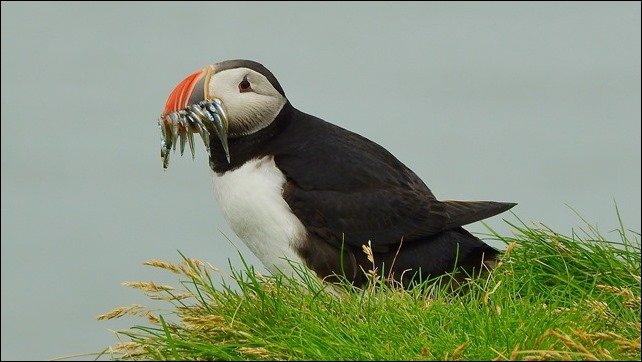
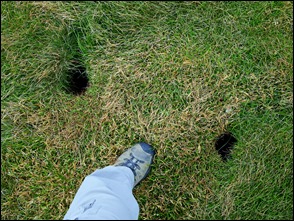
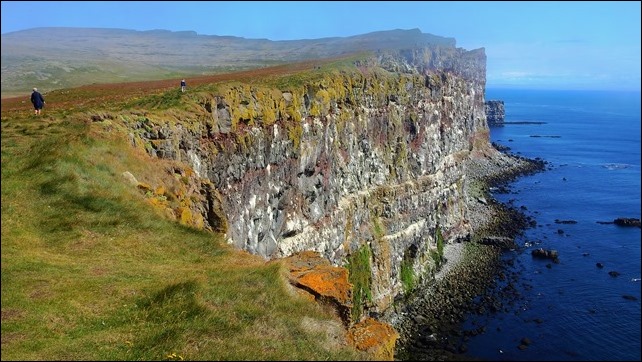
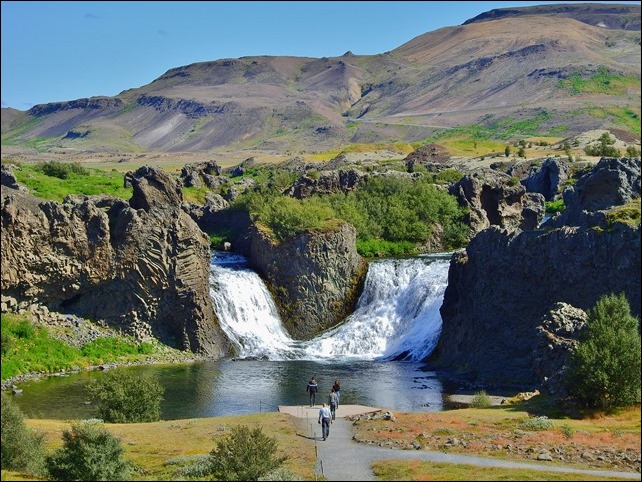
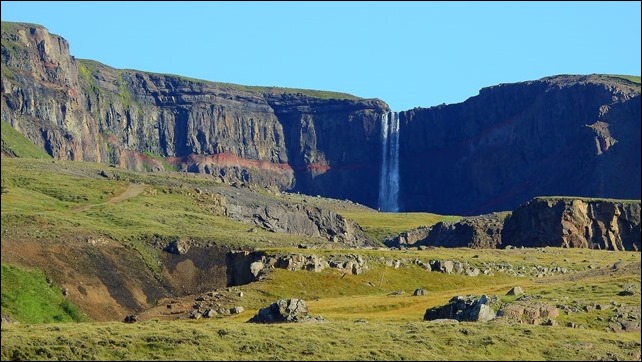
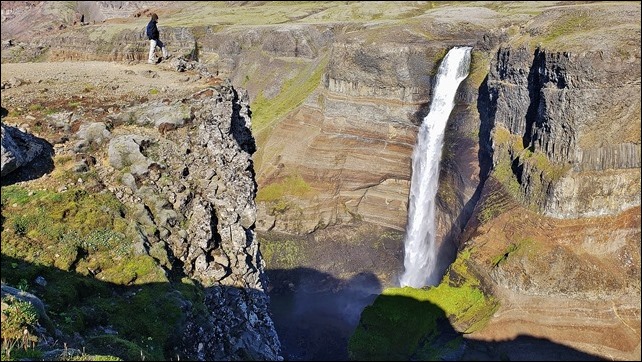
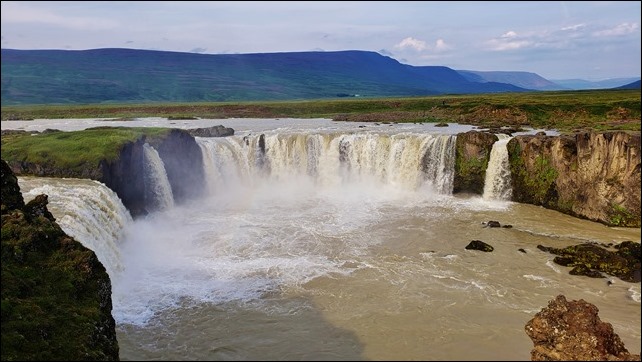
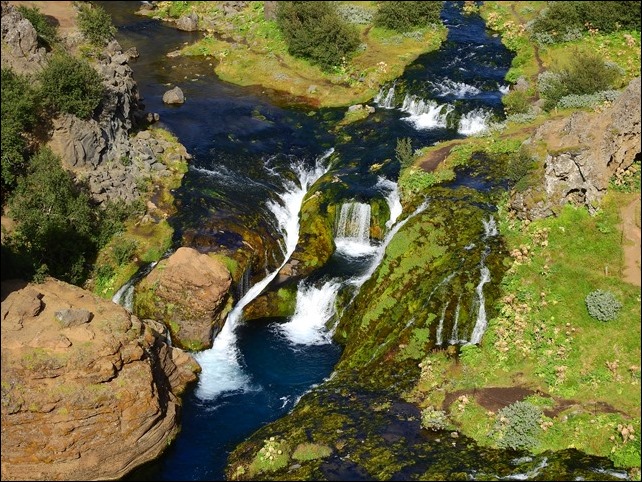
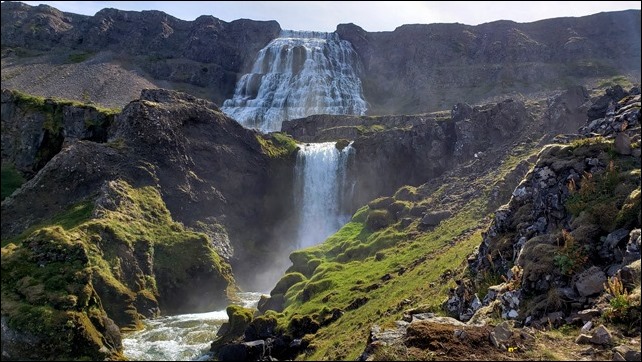
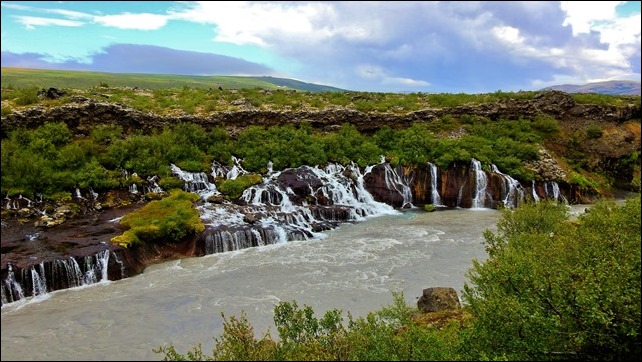
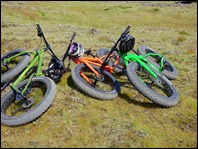
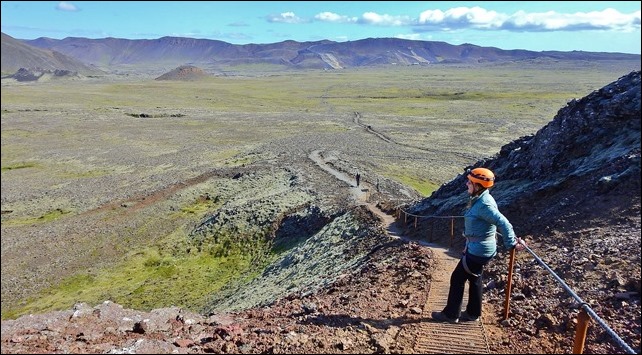
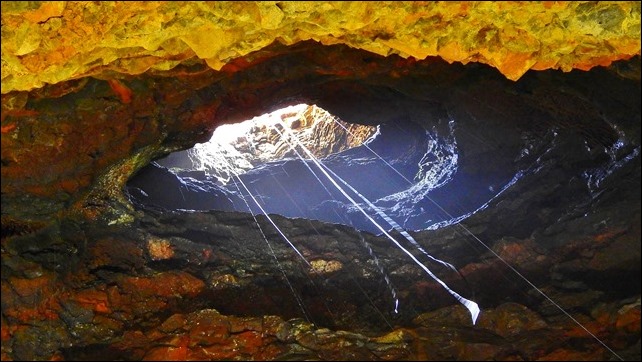
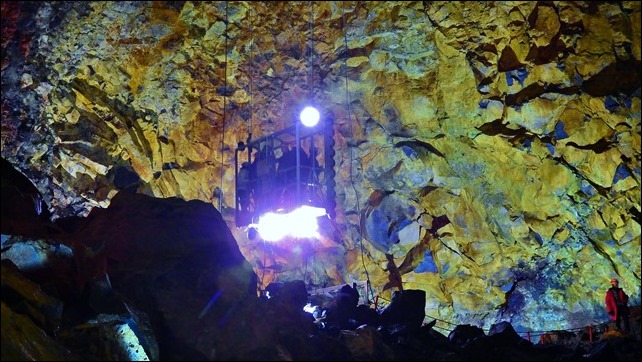
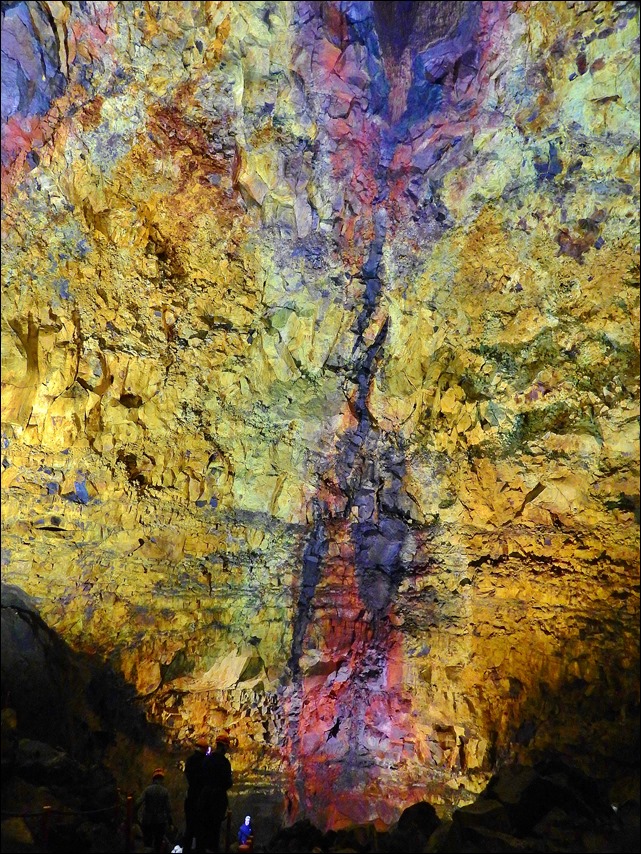
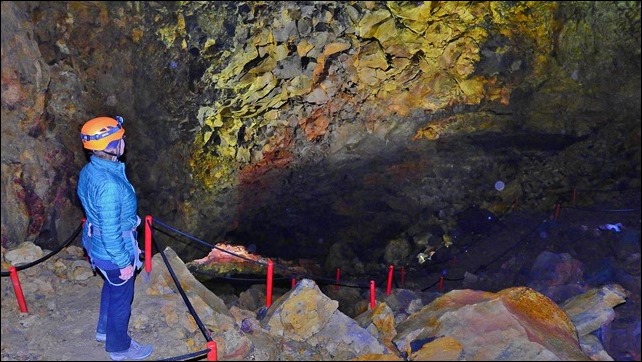
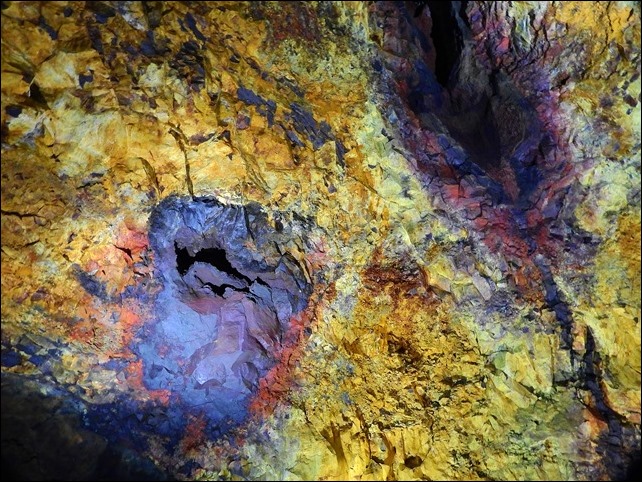
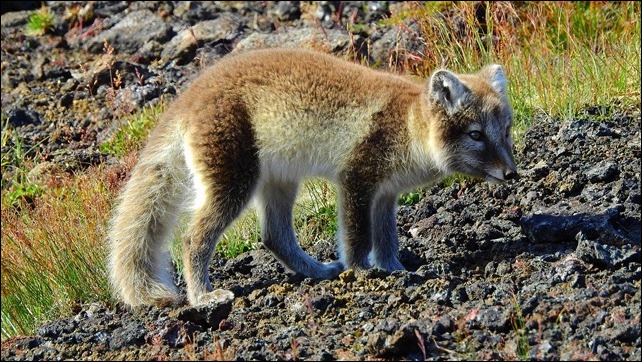
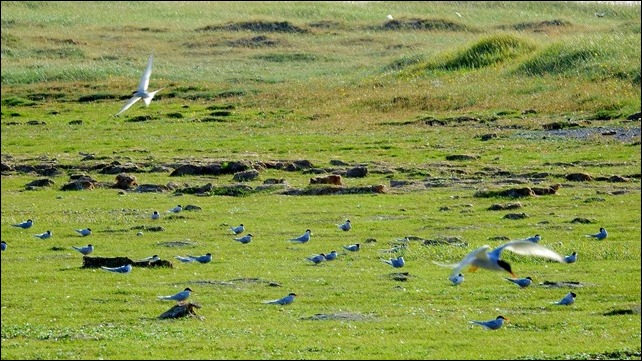
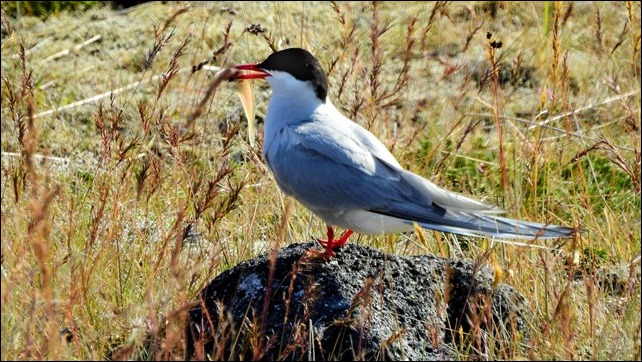
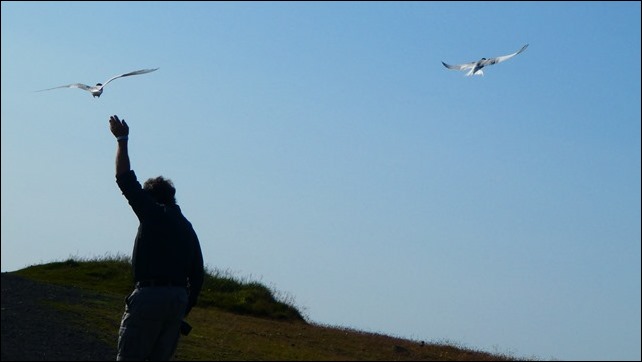
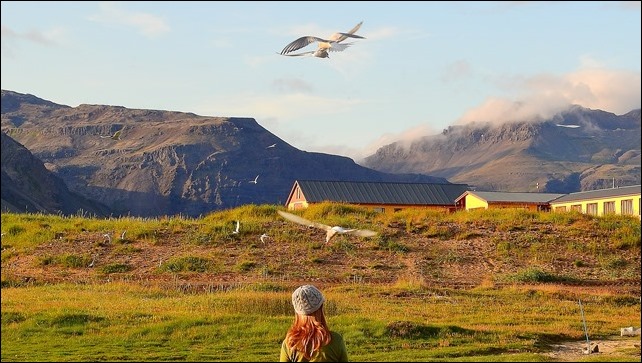
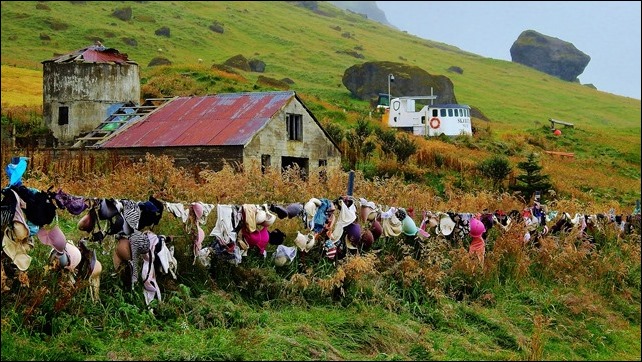
Greg, I love your postings. I share your travel values, but perhaps have less assets than you do. Could I take the same trip around Iceland for $10,000 (or less)?
At least I can travel vicariously with you!
William, for two people?
— not counting air fare, it would be pretty easy to do at least a couple of weeks for $10K, maybe longer. You’d have to be judicious about what tours to buy into, and you’d have to pick and choose among hotels and B&B’s. We were not that careful, we booked through an agency, and our costs were only a bit over that limit — so I’d think you could make it happen. I’d suggest for tours only two: Inside the Volcano, and Askja Super-Jeep. Everything else we could have done ourselves. at lower cost. And of course, plan to fix your own meals as much as possible. Twenty days of restaurant meals can easily top $2000 or more.
A wonderfully informative blog, Greg. Thankyou. We adored the Puffins on Newfoundland. Great photos. The volcano experience would be one of a lifetime, with those incredible colours!
Nice post as usual.
Hi Greg. I enjoyed your wonderful post on Iceland. Don’t ever stop posting as I learn so much from them not to mention how entertaining Please give my love to Karin. We really need to get together soon.
Amazing adventure, Greg and Karin! And excellent post including spectacular photos! Thank you for putting this all together for us who travel vicariously. I’ll bet all those names were fun to type, huh? 😉 Great job! –Diane